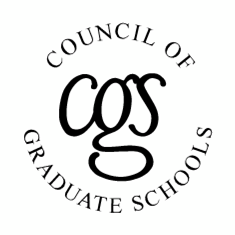The
Council of Graduate Schools (CGS)
continued its efforts to improve undergraduate and graduate education
through the Preparing Future Faculty (PFF) program. Launched in 1993
as a partnership between CGS and the Association
of American Colleges and Universities (AAC&U), PFF evolved
into four distinct program phases as well as two other separate but
closely related programs:
The
programs began in 1993 with 17 clusters and a total of 88 involved institutions.
As of 2002, the programs included 76 clusters in four phases, with approximately
295 participating institutions. This group of distinguished
institutions included:
- 43
Research institutions
- 21
Doctoral institutions
- 86
Masters degree institutions
- 65
Baccalaureate institutions
- 61
Associates degree institutions
- 6
specialized institutions
Many
of the involved institutions also served distinct missions and constituencies.
There were:
There
were a wide array of institutional models represented in the PFF program
as well.
- 53
private institutions
- 167
state and/or local colleges and universities
- 58
religiously affiliated
- 4
American Indian tribal colleges
- 1
military academy
As
a nation-wide initiative, the PFF program potentially impacted 208,222
doctoral students. (This figure is based on the 1997 total graduate
student enrollment figures at the anchor, doctoral degree granting institutions.)
The
PFF program was sponsored by CGS and AAC&U with support from
the National Science Foundation, The Pew Charitable Trusts, and The
Atlantic Philanthropies.
In
the spring of 1993, with support from The Pew Charitable Trusts, seventeen clusters
of institutions were selected following a national competition to receive
grants to create model PFF programs. Five doctoral-producing institutions
received substantial grants to establish PFF programs; twelve other
institutions received smaller grants for specific initiatives to start
PFF programs. In all, 85 institutions were involved in bringing "consumers"
of Ph.D.s together with "producers" to collaborate in planning programs
that introduced graduate students to faculty life in a variety of campus
environments.
Each
cluster developed its own program based on institutional interests,
needs and opportunities. The clusters were given broad guidelines and
were urged to plan their programs in accordance with their students'
maturity and stage of development; to include mentoring in teaching
and other aspects of professional development; to provide direct, personal
experience in institutional settings; and to emphasize emerging and
future roles of faculty.
The
lead doctoral degree granting institutions in PFF 1 included:
Back
home | Back to top
In
the spring of 1997, ten of the original participants and five new participants
with PFF-like activities were chosen to help move PFF from the status
of demonstration project to a national model for doctoral education.
They took PFF from pilot projects to institutionalized programs.
PFF 2 participants also scaled up their programs to give more graduate
students access to the program. Participants also committed to
sharing their knowledge with constituencies that have a stake in the
future of the professoriate and to helping other universities and departments
develop their own version of PFF.
The
lead doctoral degree granting institutions in PFF 2 included:
Back home | Back to top
PFF
3 took on a new direction. With support from the National Science Foundation, PFF developed collaborations
with disciplinary associations in the sciences and mathematics. They
included the American Association of Physics
Teachers, the American Chemical Society,
the Mathematical Association of America,
working with the American Mathematical
Society, and the Special Interest
Group on Computer Science Education / ACM. Each conducted a national
competition to select doctoral departments in their fields to develop
model PFF programs: Shaping the Preparation of Science and Mathematics
Faculty. The PFF national staff, advised by a National Advisory Committee,
selected four clusters in the biological and life sciences. Overall,
19 clusters of departments were selected and designed departmentally-based
programs that drew upon promising practices learned in phases 1 and
2.
The
participating departments, and their disciplinary societies, showcased
their experiences at society meetings and in society publications. Each
society produced a report that highlighted the promising practices
based on the two-year program.
The
lead doctoral degree granting institutions selected by the professional
association in PFF 3 included:
American
Chemical Society
American
Association of Physics Teachers
Special
Interest Group on Computer Science Education / ACM
Mathematical
Association of America and American Mathematical Society
Biological
and Life Sciences
Back
home | Back to top
In
1999, with support from The
Atlantic Philanthropies, CGS and AAC&U expanded departmental
PFF programs into the humanities and social sciences. The American Historical Association, American Political Science Association, American Psychological Association, American Sociological Association, National Communication Association, and National Council of Teachers of English collaborated
with PFF. Each association conducted a national competition to select
doctoral departments in their fields to participate in the newest PFF
program: Shaping the Preparation of Future Social Sciences and Humanities
Faculty.
The
lead doctoral degree granting institutions selected by each association
in PFF 4 included:
American
Historical Association
American
Political Science Association
American
Psychological Association
American
Sociological Association
National
Communication Association
National
Council of Teachers of English
Back
home | Back
to top
Related Resources:
Supporters:


